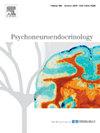How intersectional identity and discrimination contribute to depressive symptoms and hair cortisol concentrations among low-income, racially and sexual diverse adults
IF 3.4
2区 医学
Q2 ENDOCRINOLOGY & METABOLISM
引用次数: 0
Abstract
Significant gaps remain in our understanding of how minority stress patterns health outcomes for adults at the intersection of ethnicity/ race and sexual orientation. In particular, little is known about how cumulative cortisol (measured via hair cortisol concentration as an indicator of chronic stress; HCC) and depressive symptoms are related to holding an intersectional minoritized identity (e.g., sexual minority people of color; SM-POC) and experiencing intersectional discrimination (e.g., heterosexism and racism). The current study examined the relationship between intersectional identity or discrimination and HCC or depressive symptoms. Participants were (N = 69) low-income, predominantly sexual minority and people of color in the Greater Los Angeles area. Participants completed self-report measures and provided a hair sample for cortisol assay. Intersectional identity was not associated with greater HCC or depressive symptoms. However, differences in HCC emerged based on discrimination type (F (2, 66) = 3.74, p = .03, η2= .10). Participants who reported intersectional heterosexism and racism had greater HCC concentrations (M = 30.71, SD = 29.71) than did participants who reported only a single type of discrimination (i.e., racism only or heterosexism only; M = 15.35, SD = 2.60, p = .03, 95 % CI = [2.01, 28.71]), or than participants who reported neither types (M = 12.40, SD = 16.11, p = .01, 95 % CI [4.85, 31.76]). There were no differences in depressive symptoms by discrimination type. These results provide initial empirical support to largely theoretical arguments about how to investigate mechanisms underlying disparities to understand why and how minority stress is patterned. Findings showing associations between intersectional discrimination and HCC, but not depressive symptoms, provide potential support for theories about examining allostatic load markers to identify stress-related etiological mechanisms linked to health disparities among minoritized populations.
在低收入、种族和性别不同的成年人中,交叉认同和歧视是如何影响抑郁症状和毛发皮质醇浓度的
我们对少数民族压力如何影响在种族/种族和性取向交叉点上的成年人健康结果的理解仍然存在重大差距。特别是,人们对累积皮质醇(通过头发皮质醇浓度测量,作为慢性压力的指标;HCC)和抑郁症状与持有交叉少数群体身份(例如,有色人种的性少数群体;SM-POC)和经历交叉歧视(如异性恋和种族主义)。目前的研究调查了交叉身份或歧视与HCC或抑郁症状之间的关系。参与者(N = 69)低收入,主要是性少数群体和大洛杉矶地区的有色人种。参与者完成自我报告测量,并提供头发样本进行皮质醇检测。交叉身份与更大的HCC或抑郁症状无关。然而,不同类型的HCC存在差异(F(2,66) = 3.74,p = )。03年,η2 = .10)。报告交叉异性恋和种族主义的参与者的HCC浓度(M = 30.71, SD = 29.71)高于仅报告单一类型歧视的参与者(即仅种族主义或仅异性恋;M = 15.35, SD = 2.60, p = 。03,95 % CI =[2.01, 28.71]),或低于两种类型均不报告的参与者(M = 12.40, SD = 16.11, p = )。01, 95 % ci[4.85, 31.76])。不同歧视类型的抑郁症状无显著差异。这些结果为如何研究差异背后的机制以理解少数族裔压力模式的原因和方式的理论争论提供了初步的实证支持。研究结果显示,交叉歧视与HCC之间存在关联,但与抑郁症状无关,这为研究适应负荷标志物以确定与少数民族人群健康差异相关的压力相关病因机制的理论提供了潜在的支持。
本文章由计算机程序翻译,如有差异,请以英文原文为准。
求助全文
约1分钟内获得全文
求助全文
来源期刊

Psychoneuroendocrinology
医学-精神病学
CiteScore
7.40
自引率
8.10%
发文量
268
审稿时长
66 days
期刊介绍:
Psychoneuroendocrinology publishes papers dealing with the interrelated disciplines of psychology, neurobiology, endocrinology, immunology, neurology, and psychiatry, with an emphasis on multidisciplinary studies aiming at integrating these disciplines in terms of either basic research or clinical implications. One of the main goals is to understand how a variety of psychobiological factors interact in the expression of the stress response as it relates to the development and/or maintenance of neuropsychiatric illnesses.
 求助内容:
求助内容: 应助结果提醒方式:
应助结果提醒方式:


